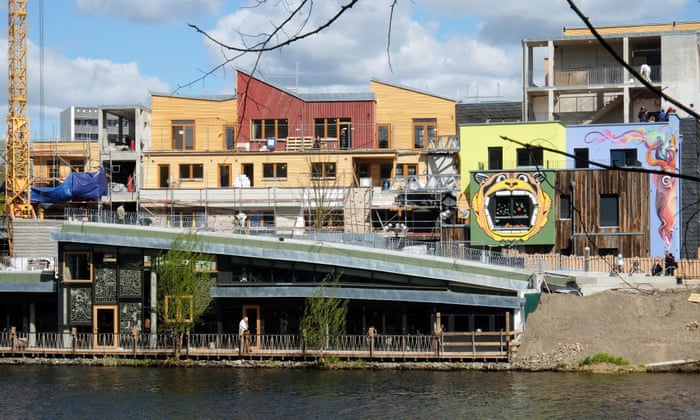What if a city allowed a huge regeneration project to be led, not by the wealthiest property developer, but by the club owners who put on the best parties in town? With the opening of Holzmarkt, Berlin is about to find out

For the first decade of the 21st century, the industrial wasteland between Berlin’s Ostbahnhof station and the river Spree was earmarked for a huge urban regeneration project – one that would show that the German capital could keep up with London and New York. Where flowing water had once marked the divide between communist and capitalist spheres of influence were to be a phalanx of high-rise blocks made of shiny glass, some of them 80 metres tall, containing luxury apartments, hotels and offices.
But tomorrow, that same 12,000m2 patch of land will open with an altogether different look: an urban village made of recycled windows, secondhand bricks and scrap wood, containing among other things a studio for circus acrobats, a children’s theatre, a cake shop and a nursery where parents can drop off their children while they go clubbing next door. There’s even a landing stage for beavers.
The Holzmarkt development is the result of an unprecedented experiment in a major world capital: what if a city allowed a new quarter to be built not by the highest bidding property developers or the urban planners with the highest accolades, but the nightclub owners who put on the best parties in town?
Juval Dieziger, 42, and Christoph Klenzendorf, 43, used to run Bar25, an institution which started as a silver ‘68 Nagetusch trailer serving up whisky and techno and grew into a nightclub in the style of a Western saloon underneath the old Jannowitzbrücke station.
Along with nearby Berghain, Bar25 was one of the legendary venues that fostered post-millennial Berlin’s status as a party capital. With the site due to be regenerated by holding company SpreeUrban, Bar25 closed its doors with a five-day party in 2010.
Read more here.























